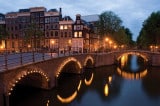Travelling through the Alentejo region of Portugal, Yvonne Moran is surrounded by lush traces of its Roman, Visigoth and Moorish past.
Medieval-walled hilltop towns of white-washed houses with castles standing sentry; rural, meandering routes; sweeping montane views of grape, olive and cork trees and inexpensive accommodation in age-old towns or farmhouses: Alentejo, which covers almost one third of Portugal, remains largely undiscovered by Irish tourists.
Evora, the region’s jewel in the crown, boasts traces of its Roman (pictured), Visigoth and Moorish predecessors within the Unesco-designated university city.
Alentejo, whose name derives from ‘beyond the Tejo’, is full of other precious stones, however. There’s the northern, fortified, medieval hilltop town of Marvao. Population: approximately 100. Mertola, beautifully situated between two rivers in the extreme south, has been imaginatively designed a ‘vila museu’. Visitors can trace the ancient town’s art and history in a series of well-designed museums ensconced between brightly-coloured houses on narrow, winding, cobblestone streets.
In between, there’s a wealth of things to see and do.
Some 800m above sea level, the one-square kilometre, white-washed town of Marvao offers spectacular, 360-degree vistas of the rural surroundings. There’s the obligatory castle, (built to protect the village against its Spanish neighbour,) several museums and the Casa da Cultura. Religious statues removed from old churches, traditional clothing, medieval and Jewish headstones and the ways local plants were used for medicine are displayed. Like most Portuguese museums, it’s closed between 12.30 to 2.00 pm, but you can check out the nice handcraft shops or lunch in one of the small restaurants should you need to wait.
Meander around the narrow, traffic-free, cobblestone streets as the sun sets to get a feel of living in this special place.
Castelo de Vide, 10km west, is a bustling modern town with a medieval heart at its centre. The Jewish quarter, established by those fleeing the Spanish Inquisition, is located amongst sloping, cobbled lanes, twisting alleyways and run-down, white painted homes below the castle walls. It’s in poor condition, but fantastic views can be enjoyed from its ramparts. Portugal’s oldest surviving synagogue holds its original tabernacle. The marble Renaissance Fountain da Vila, in a quiet and lovely square, which still dispenses the town’s famous mineral water, is also worth checking out.
Further south, 3km west of Alter do Chao, is the Coudelaria Alter-Real stud farm. It’s a must-see for horse lovers. Founded by 18th century royalty, the €5, 90-minute tour includes a (once daily) falcon exhibition, views of the magnificent stabled stallions, with a wonderful collection of antique European and American carriages and the museum that includes saddles and horse armour. The N245 isolated route south to Estremoz, which holds a famous Saturday market, traverses a ghostly region of ancient, twisting cork trees.
Borba is known for its antique shops, many full of junk and all with sky-high prices, but if you have time, you might just find a nice memento before heading to Vila Vicosa, 5km south. This region is famous for its marble quarries, some of which are visible from the road. The lovely town’s marble palace, which dominates one side of the very large square made from the same material, was the monarchy’s last residence. Several different palace tours require at least half a day, and as driving – again – in the dark to get to Monsaraz, 65km south, didn’t prove very attractive, the only option was to leave without doing the most important palace tour conducted only in Portuguese.
Field upon field of olive trees surround Monsaraz; clouds half-covered the beautiful medieval village, creating a mystical aura. The car wended its way up, and further up, on the twisting, turning road. Europe’s largest artificial lake glistened below the white washed houses and granite paved village of 35 families. Handcraft shops displayed pottery made in San Pedro do Corval, 8km west. Fantastic, high-quality bowls, dishes and pottery can be purchased for a fraction of Irish costs, and with more than 20 factories and shops, there’s a great variety in style and content from which to choose.
A beautiful drive over and around the tranquil lake that perfectly reflected the clouds above was some consolation in having to depart for Serpa.
The Celts, Romans and Moors occupied this pretty town. Praca da Republica and the privately-owned clock and watch museum, which boasts more than 2,000 pieces, are worth checking out.
Mertola, which is situated at the region’s south east, just before the Algarve, has the unusual designation of ‘city museum.’
Sitting high on a spur and nestled between two rivers, the old town is dotted with small museums and exhibitions that trace its art and history. There’s the obligatory castle and nearby, a Roman site containing a house and Roman mosaics. Matriz church, nearby, was originally a 12th century mosque; the Moorish arched doorways and mihrab, or prayer niche, still survive. The small, but well displayed Islamic Museum and Museum of Sacred Art, a former tiny home that shows how a family lived just 30 years ago and a traditional weaving exhibition are all worth seeing.
Evora was the final stop in the eight days of driving bliss. It was a bit of a shock to arrive in a small, bustling city after many days of rural peace.
The best preserved Roman temple in Portugal stands opposite the privately-owned, former convent church of Sao Joao Evangelista. Astonishing 18th century azulejos, or tiles, cover the interior walls of that masterpiece. A tangle of alleys recalls the Moorish occupation just off the busy main square. Many of the city’s monuments, including palaces and the Jesuit university, date from the 14th to the 16th century. The Se, or cathedral, houses an unusual statue of a pregnant Virgin Mary. Evora Museum boasts a fine collection of well-displayed 15th and 16th century Flemish and Portuguese religious paintings.
But it’s the chapel of bones, near the Church of San Francisco, that’s Evora’s most unusual sight.
Standing opposite the lively indoor food market, it contains the remains of 5,000 monks removed from 42 monastic cemeteries. “We bones here are waiting for your bones,” a sign above the vaulted room announces to those still very much alive.
It was an interesting tourist finale to a very interesting and fulfilling (temporal) journey.
The last stop in Evora, before heading to Lisbon airport, was shopping for the country’s famous export – Port – along with cold meats and seriously delicious goat, sheep and cow cheeses. Ferreira late bottled vintage was recommended by locals, and Pingo Doce, the supermarket that’s ubiquitous throughout the country, has a great stock of meats and cheeses for next-to-nothing prices.
A Portuguese night organised for family several days after the holiday ended was a reminder that a return visit to our nearby neighbour must happen sooner, rather than later.
Information
Getting there: Aer Lingus flies to Lisbon. The airport has a range of car hire companies to begin your Alentejo adventure. If staying in Lisbon prior to Alentejo, pick up your car from the airport as parking is very difficult to find in the city. It’s also very easy to exit the city from the airport, unlike the historic downtown.
Alentejo Information: www.visitalentejo.pt
Email: info@turismodoalentejo.pt
Guide book: The Rough Guide to Portugal, E21.10. This guide comprehensively covers what to see and where to eat and sleep.
Staying there:
Lisbon: Hotel Metropole. This old world, three star hotel is centrally located on Rossio Square in the heart of the historic district. Rooms start from E70 for a single or double, including breakfast. www.almeidahotels.com
The following accommodation is generally located in rural areas, or small towns, near the places visited:
Marvao: Rooms start from E45 for single, E65 for twin, including breakfast www.a-opoejo.com
Borba: Rooms start from E75 for double, including breakfast. www.casadoterreirodopoco.com
Monsaraz: Rooms start from E65 for a single, E75 for double, including breakfast www.montesaraz.com
Serpa: Rooms start from E60 for single, E80 for twin, including breakfast. www.cantardogrilo.com






